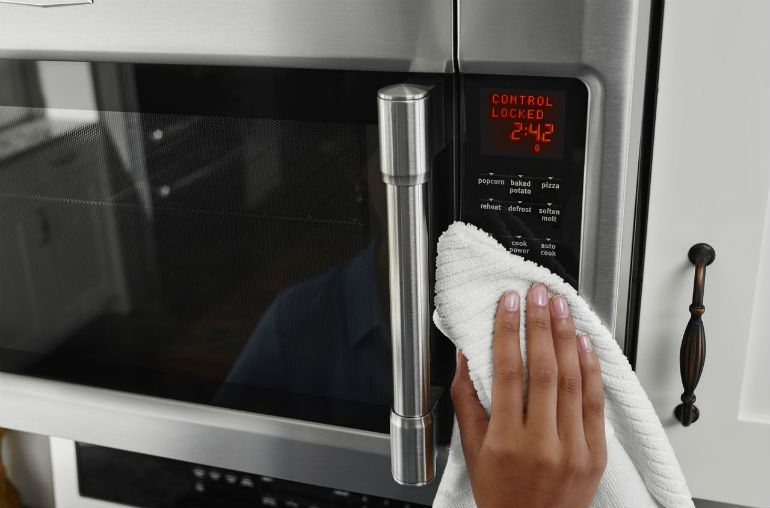Microwaves are a staple in modern kitchens, beloved for their convenience and speed. However, like any appliance, they can experience issues that disrupt their functionality. At TheKitchenApplianceDad.com, we understand how essential it is to have your microwave up and running. That’s why we’ve compiled this comprehensive guide to help you quickly diagnose and fix the 20 most common microwave problems.
Check the Power Source: Ensure the microwave is plugged in and the outlet is functioning. You can test the outlet with another appliance.
Examine the Door Latch: A faulty door latch may prevent the microwave from starting as a safety measure. Inspect for any damage and replace it if necessary.
Thermal Fuse or Ceramic Fuse: If the microwave has overheated, the thermal fuse might have blown, cutting off power. Replace the fuse, but also investigate what caused the overheating.

Magnetron Issues: The magnetron uses high voltage to create microwave frequency to cook food. If it’s burnt out or broken, it won’t heat. This part should be replaced by a professional due to the high voltage involved.
High Voltage Diode: This component is responsible for powering the magnetron. A malfunctioning diode can result in a lack of heating. Use a multimeter to check for continuity and replace it if necessary.
Door Switch Malfunction: The door switch signals the microwave to start. If it’s defective, the appliance might turn on but not heat. Test the switch and replace it if faulty.
Check the Turntable Motor: If the motor is not functioning, the turntable won’t rotate. Replace the motor if it’s not working.
Alignment and Cleaning: Ensure the turntable is properly aligned on the guide, and clean any debris that may be impeding its movement.
Faulty Touchpad or Control Panel: Over time, touchpads can wear out or become unresponsive. If certain buttons don’t respond, it might be time to replace the touchpad or control panel.
Defective Smart Board: The smart board, or control board, is the brain of the microwave. A malfunction could cause the microwave to stop mid-cycle. This is a more complex issue and might require professional assistance.
Remove Metal Objects: Never put metal objects inside a microwave as they can cause sparks.
Waveguide Cover: Check the cover for damage. If it’s burnt or damaged, replace it.
Rack Support: If your microwave has a rack, inspect the support for any signs of arcing or damage, and replace it if necessary.
Replace the Bulb: Before replacing, ensure the microwave is unplugged. If the new bulb doesn’t work, the issue might be with the socket or wiring.
Check the Door Hinges and Seals: Clean and inspect the hinges and seals for any sign of damage. Replace if they’re worn out.
Door Alignment: If the door is misaligned, it may not close or latch properly. Adjust the hinges or consult a professional for assistance.
Turntable Motor: A grinding or humming noise might indicate a problem with the turntable motor.
Magnetron or Other Components: A loud buzzing or humming can also be caused by a failing magnetron or other internal components. Seek professional help for diagnosis and repair.
Check Power Levels: Make sure the display hasn’t been dimmed or turned off in the settings.
Circuitry Issues: A malfunction in the microwave’s circuitry can cause display issues. This might require a professional repair or replacement.
Faulty Control Panel: This can be a sign of a short in the control panel. It’s important to address this quickly as it poses a safety risk.
Ventilation: Ensure there’s adequate space around the microwave for proper ventilation.
Cooling Fan Issues: If the cooling fan fails, the microwave can overheat. The fan may need replacement.
Cooling Feature: Some models have a cooling feature that runs the fan to cool internal components. Consult your manual to see if this is normal operation.
Control Board Problems: If the fan doesn’t turn off, the control board might be defective.
Stirring and Rotation: Make sure to stir food during cooking and that the turntable is functioning to ensure even cooking.
Reset the Microwave: Unplug the microwave for a minute and then plug it back in to reset the electronic components.
Panel Replacement: If the panel remains unresponsive, it may need to be replaced.
Cooking Steam: Some condensation is normal, especially when cooking moist foods.
Ventilation: Ensure the microwave vents are clear and functioning to reduce condensation buildup.
Release Mechanism: If the door won’t open, the release mechanism could be jammed or broken. This may require replacement.
Filter Check: Clean or replace any dirty grease filters and check for obstructions.
Motor Replacement: If the fan is not working at all, the motor may need to be replaced.
Consult the Manual: Different models have unique codes. Refer to your microwave’s manual for specific troubleshooting based on the error displayed.
Circuit Overload: Ensure the microwave is on its own dedicated circuit to prevent power surges.
Professional Inspection: If the problem persists, have an electrician inspect the electrical system.
Normal Operation: It’s normal for the microwave to feel warm during operation. However, if it’s excessively hot, it could indicate an insulation issue or a problem with the cooling system.
Food Residue: Clean the interior thoroughly as food residue can cause smoke or a burning smell.
Component Failure: If cleaning doesn’t help, a component might be failing and overheating, which requires immediate attention.
Remember, while some microwave issues are easily fixable with a bit of know-how, others might require a technician’s expertise. Before deciding to repair or replace your microwave, consider the cost and safety implications. Stay tuned to TheKitchenApplianceDad.com for more tips, guides, and advice on keeping your kitchen appliances in top shape!

